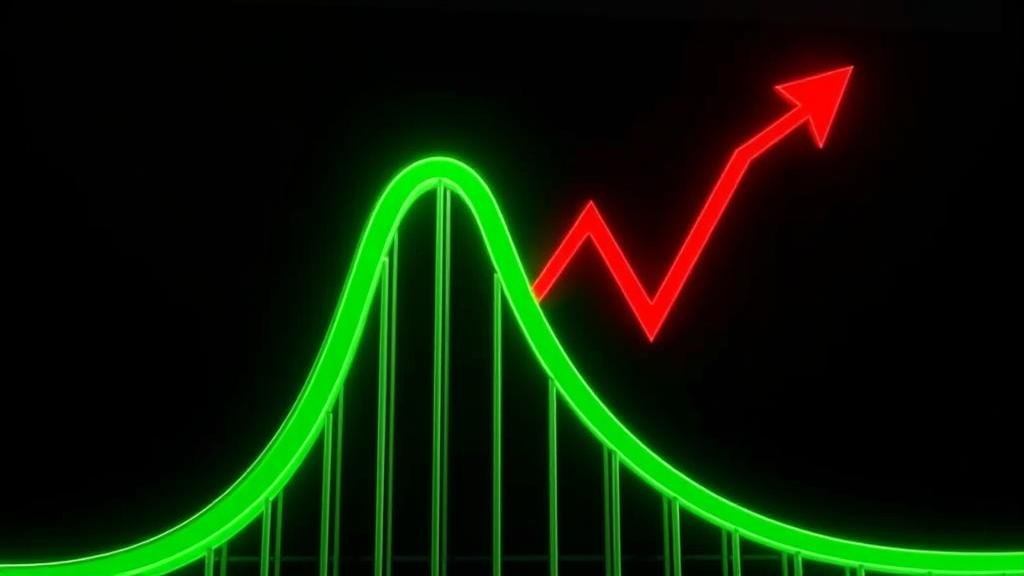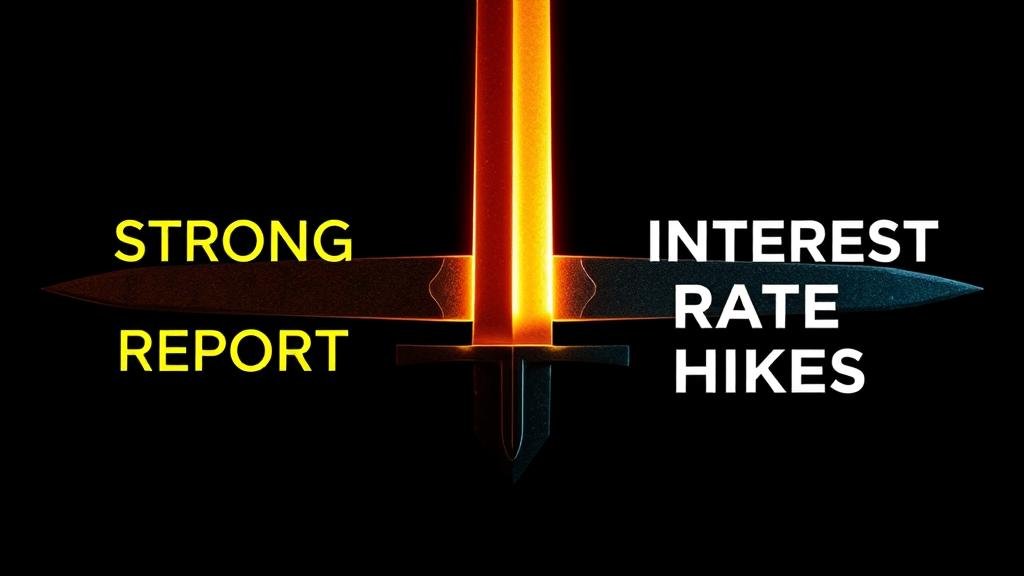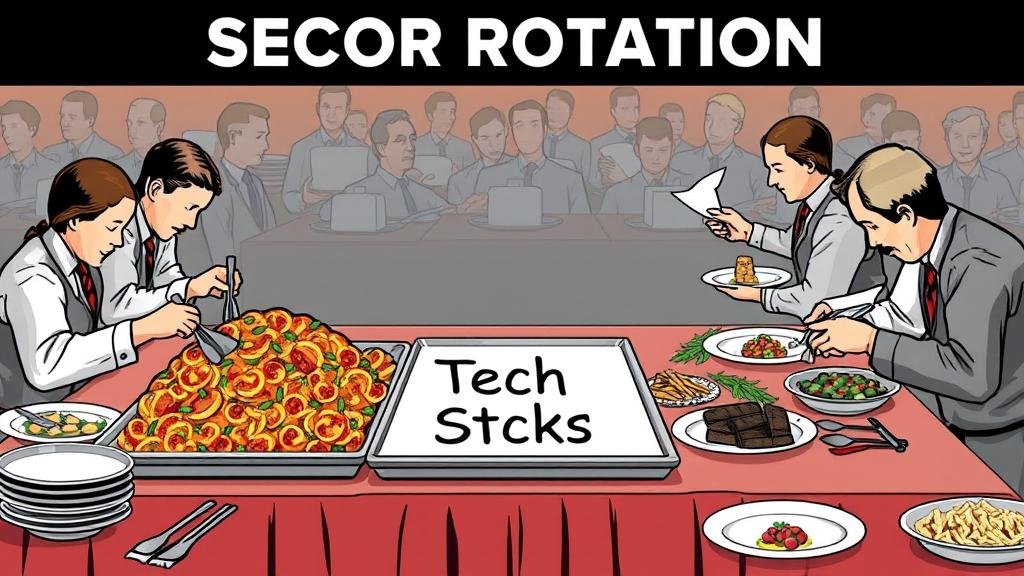Market Whiplash: Why the Nasdaq and Tech Stocks Took a Dive

The Anatomy of a Market Whiplash
The day started with a bang. The Nasdaq, home to your favorite tech stocks, shot up over 2%. You could almost hear the champagne corks popping in Silicon Valley. It felt like the stock market was finally ready to shake off its anxiety and sprint towards the sun.
Then, the afternoon hit. And the market, much like a toddler after a sugar high, had a complete and total meltdown.
The gains vanished. Poof. Gone. Within hours, the Nasdaq not only gave back everything it had earned but decided to dig itself a little hole in the red. Cue dramatic pause. Traders, in their infinite wisdom, call this a “key reversal,” a fancy term for “the party’s over, folks.” When a sell-off is this widespread, it’s not just one company having a bad day; it’s the entire neighborhood deciding to sell their houses at the same time, a clear sign of heightened stock market volatility.

The Triggers Behind the Turmoil
So, who flipped the circuit breaker on the party? What spooked a market that was practically humming with good vibes just hours before? Let’s be real, it’s never just one thing. It was a cocktail of economic news, investor jitters, and one very important company deciding to take a nap.
The Double-Edged Sword of a Strong Jobs Report
One of the main culprits was, believe it or not, a strong jobs report. I know, my 7-year-old would also find this confusing. “But Dad, isn’t lots of jobs a good thing?” Yes, hypothetical child, it is. But in the upside-down world of Wall Street, good news can be very, very bad news for tech stocks.
Here’s the deal: A booming job market makes the Federal Reserve nervous about inflation. And when the Fed gets nervous, it considers keeping interest rates high to cool things down. For tech stocks, high interest rates are kryptonite. Why? Because many tech companies are valued on big promises of future earnings. Higher rates make that future money worth less today. It’s like being promised a cookie next week, but the cookie keeps shrinking.
You could see the panic in the bond market, where Treasury yields spiked. That’s bond-speak for “investors are demanding more return for their money,” making a safe government bond look a whole lot sexier than a risky tech stock, especially amidst roaring stock market volatility.
Nvidia’s Paradox: Stellar Earnings, Sliding Stock
Adding to the drama was Nvidia, the undisputed prom king of the 2023 stock market. This is the company powering the whole AI revolution, and it recently reported earnings so good they made other companies look like they were running a lemonade stand.
And yet, on this day of days, the stock slid. Why would the star quarterback fumble on a victory lap?
Hot take coming in 3…2…1:
- Profit-taking: After a stock goes to the moon, some investors like to, you know, actually cash in. It’s the financial equivalent of leaving the party at its peak.
- “Buy the rumor, sell the news”: A classic Wall Street move. The stock price runs up for weeks in anticipation of great news. Once the news actually drops, the early birds sell to the latecomers and go home. It’s cynical, but it happens.
- General Bad Vibes: Even the most popular kid in school isn’t immune when the principal cancels the school dance. When a wave of selling hits, everyone gets wet, including market leaders like Nvidia.
When the market leader stumbles, it makes everyone else question if the ground they’re standing on is solid. You feel me?

A Shift in Sentiment: Rotation Out of Tech
The Nasdaq’s U-turn also pointed to a bigger trend: investors are starting to rotate out of tech. “Sector rotation” sounds complicated, but it’s just investors moving their money from the cool kids’ table (tech stocks) to other groups, like industrials or financials, that suddenly look more interesting or undervalued.
It’s like everyone suddenly deciding that after a year of only eating pizza, they’d really rather have a taco. When enough people ditch the pizza, the pizza parlor (in this case, the Nasdaq) starts to feel the pinch. This change in market sentiment is a key driver of market fluctuations.

What This Means for Your Portfolio: Navigating the Noise
Alright, team huddle. Seeing your portfolio do a backflip is unsettling. But before you rage-sell everything and buy a bunker in the woods, let’s take a breath and refine your investment strategy.
- Volatility is the price of admission: The stock market is gonna have mood swings. It always has, it always will. Short-term craziness and market fluctuations are part of the deal. The goal is to not let it drive you crazy.
- Diversification is your friend: This is the textbook example of why you don’t put all your eggs in one tech-shaped basket. Spreading your money around helps ensure that when one sector has a tantrum, your whole portfolio doesn’t go down with it.
- Stay informed (but not obsessed): Knowing why the market is freaking out gives you power. It helps you make smart decisions instead of emotional ones. That’s why we’re here—to translate the Wall Street chaos into something that actually makes sense. Still reading? Wow. You’re officially my favorite.
The Road Ahead
So, the Nasdaq’s wild ride was a perfect storm: a confusing jobs report, a faltering market leader in Nvidia, and a general shift in investor appetite. It’s a powerful reminder that the market isn’t a straight line up; it’s more like a theme park ride designed by a madman.
Investors will now be glued to any and all news about inflation and what the Federal Reserve plans to do next with interest rates. It’s going to be a bumpy ride. But if you stay disciplined, diversified, and informed, you can navigate the twists and turns of the stock market.
And yes, this will be on the test.